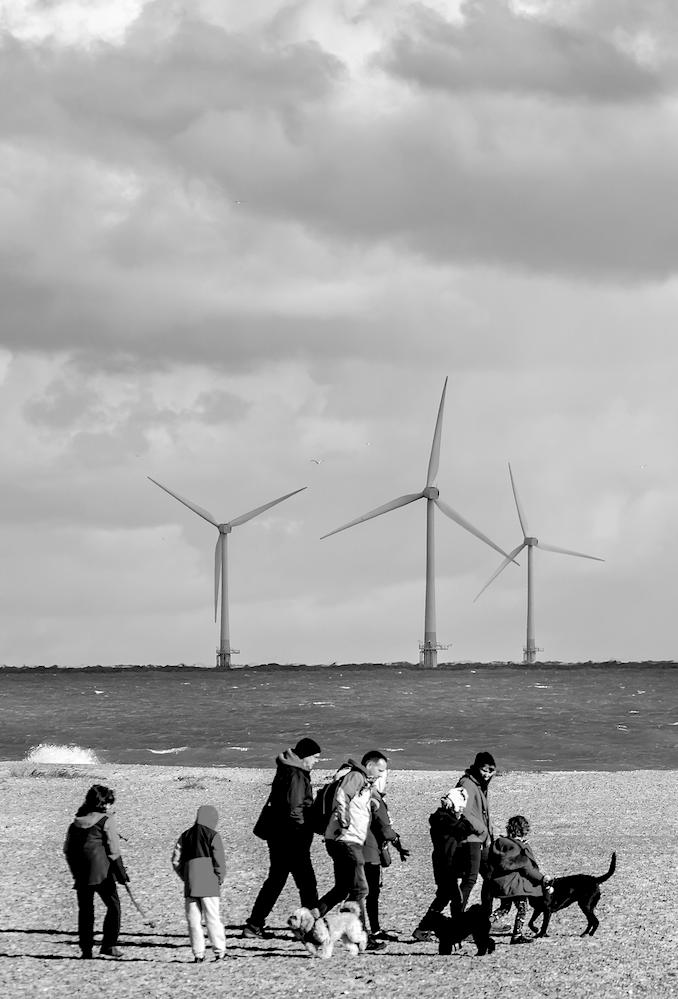
3 minute read
FINDING SUSTAINABLE YIELDS IN RENEWABLE INFRASTRUCTURE
The Uk Has Quietly Become One Of The Renewable Power Leaders
JAMES EADES | INVESTMENT RESEARCH
Sustainable investing has risen in prominence in recent years with substantial capital flowing into the renewable energy generation sector. As availability of alternative investment products increased, retail investors have found themselves able to participate in the sector’s growth as portfolios of wind, solar and battery storage assets became available through listed investment companies. Many started using these products as a method of generating diversified and attractive incomes, alongside a desire for environmentally conscious investment.
Through the last two decades, the UK has quietly become one of the leaders in renewable power generation and a global leader in offshore wind with some 2,652 turbines on 43 farms. Contributing 26.8% of the UK’s total electricity generation in 2022 alone and breaking a record by generating 70% of a single day’s total electricity in the month of November 2022, it is now seen as a key component to the achievement of the UK’s 2050 net-zero target.
It may come as no surprise to find the asset management industry at the heart of wind farm ownership with considerable capital flowing into the asset class in recent years. Not exclusive to the sizeable institutional investors, retail investors can participate in the UK’s growth of wind power generation through a selection of three listed investment trusts, among other vehicles. With two of the three generating positive returns in a difficult 2022 and all three recently announcing increased target dividends for the coming years, two in-line with inflation, their potential to generate sustainable and growing incomes is evident.
How these assets generate revenues can be described simply as selling generated electricity into the grid network at contracted pricing agreements. The mechanisms underpinning this, however, are somewhat more complex and split across government subsidies and open market power prices.
Government subsidies remain the key revenue generator for these assets, split across Renewable Obligation Certificates (ROCs) and Contracts for Difference (CfDs). Assigned to the assets upon completion for a period of fifteen to twenty years with inflation linkage embedded in the agreement, ROCs have been a valuable subsidy in recent years given their ability to be traded or submitted to the regulator for payments should capacity levels be met. Perhaps they’ve been too valuable given the closure of the scheme in 2017 for new generation assets, but they’ll continue to provide inflation linked returns until they expire which will likely be well into 2030. CfDs, on the other hand, provide generators with a smoothing mechanism in the face of volatile wholesale power prices. Below a lower band, price generators receive subsidies but exceed the top band price, the generator is required to pay the government a significant slice of the excess revenues. At the height of the 2022 energy crisis, this mechanism was expected to result in generators paying the government back some £660m.
Away from government subsidies, revenues come in the form of Purchasing Power Agreements (PPAs) or longterm contracts for energy supply at agreed upon prices between supplier and purchaser. This enables companies the opportunity to lock in prices and ensure energy is sourced by renewable means in-line with their own corporate
(UKW) all provide access to a split of offshore and onshore wind assets and a primary focus in the UK. There are, however, some differences with ORIT and TRIG offering marginal exposure to alternative technologies, such as batteries and solar, and European located assets, compared to UKW’s sole focus on UK wind. Construction remains the greatest differentiator, though, with ORIT leaning into the deep bank of industry experience within the team to enhance generation capacity and hence returns through construction over the purchase of already completed assets. While a risk in its own right, constructing the farms does limit exposure to the competition in bidding processes for completed assets.
Focusing on the bigger picture of understanding the tailwinds behind wind power in the long term - with plans to increase offshore wind output by a multiple of five by 2030 - and the mechanisms underpinning revenue generation within these assets is arguably the best approach to initially sustainability targets. It is expected the contracts will form a larger part of the revenue mix over the next fifteen years, but how government subsidy programmes will evolve remains unclear.

Three investment options exist within the space. Octopus Renewables Infrastructure Trust (ORIT), The Renewables Infrastructure Group (TRIG) and Greencoat UK Wind assess the sector. Once achieved, the intricate difference between the portfolios on offer can become a larger focus. However, as we carve up our assessment of wind assets, there is a possibility that these assets could provide a sustainable yield given the backing afforded by subsidies alongside the conscience of participation in an environmentally friendly solution on the path to net-zero.






